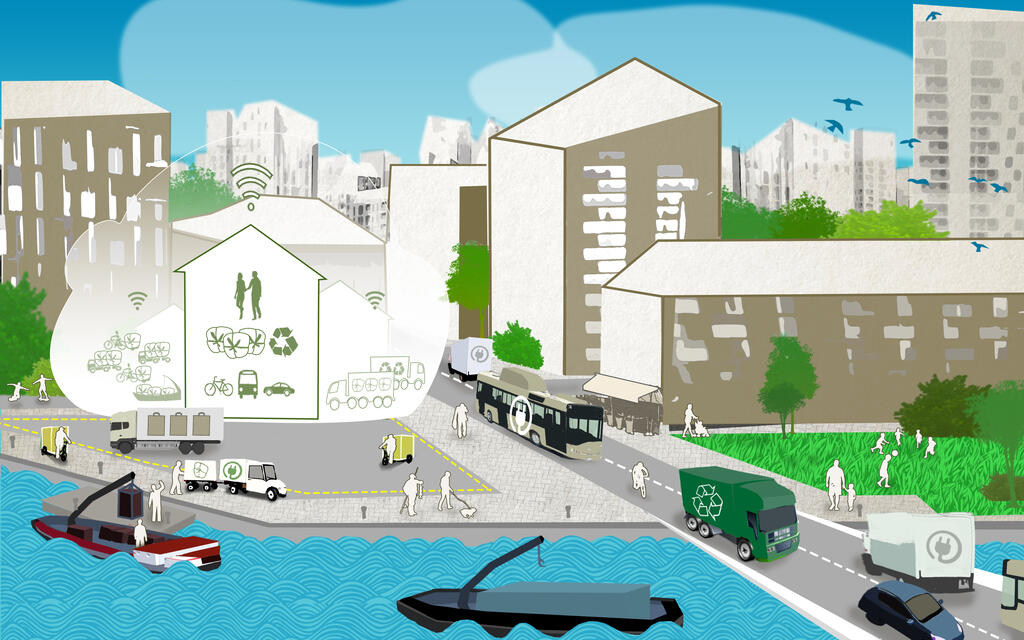Smart solutions now available for the cities of the future
A long story about the city of the future set the tone for DenCity's final conference which came at the end of five years of productive project work. In the tale, the densely built-up city has sustainable, compact transport solutions for both goods and passengers which make the city centre quieter and largely emission-free. Can this story become reality?

During the last five years, all 34 partners in the project and the different areas that it has addressed have contributed to radical new ways of thinking. Innovative processes have been created to allow for denser sustainable development with pleasant city environments and less traffic on the streets. When combined, these different solutions result in a complete concept for sustainable transport and mobility which can be incorporated into urban development plans.
DenCity began as a pilot study and received funding from Vinnova as part of the Challenge-Driven Innovation initiative. Catharina Zajcev, Vinnova's administrator for smart cities, commented:
-DenCity has for some time been developing solutions that will help us to achieve the Sustainable Development Goals in Agenda 2030. The systemic approach and the large number of partners are two of the project's major strengths.
Organisations such as housing associations, transport companies, vehicle manufacturers, food retailers and city authorities have been involved in the various work packages that make up the project. Many of the partners described enthusiastically the lessons that they had learned and the insights that they will take away with them.
-We know that we can influence people's lives and create the right conditions for them by the way we build our houses. We want our houses to be lived in for at least 100 years. Among the initiatives that we are trying out are car pools, shared outdoor areas and remote working. Any solutions that make life easier and encourage people not to own their own cars are welcome, said Therese Berg, head of sustainability at Riksbyggen, a Swedish housing association.
-We need a new way of thinking. It isn't sustainable for different companies to deliver directly to people's doors. A new type of infrastructure is the solution and this includes making deliveries to parcel boxes near people's houses. All businesses can deliver to them via a non-competitive organisation that represents all the transport companies, explained Per Ljungberg, managing director of Svensk Digital Handel, a Swedish online retail association.
-We need cooperation and functioning business models so that we can create benefits that users are prepared to pay for. One example is the shared load concept in Lindholmen which has reduced the volume of goods traffic there by around 90% and improved the quality of the service, said Louise Larsson, project leader at Älvstranden Utveckling, a property management company.
-In tests with quiet, zero-emission electric refuse trucks, which have proved very popular with the residents of Gothenburg, we have seen other benefits. These include the two drivers in each truck now being able to talk to one another and get to know one another. They also don't feel nearly as tired at the end of the working day, said Peter Årnes, strategist in the waste and water department of the City of Gothenburg.
-We want to gain a better understanding of international issues, for example the roll-out of 5G in dense cities. We have realised that the energy, digital and transport infrastructures must be developed in a coordinated way, commented Olle Isaksson, Director Global Partnering & Ecosystems at Ericsson.
Later in the spring, the project's implementation guide will be published at DenCity.se: open innovation available for everyone to benefit from.
-We hope that we have been able to inspire a lot of organisations to implement our solutions, to scale them up and to commercialise them, said Andreas Josefsson, project leader at CLOSER.
